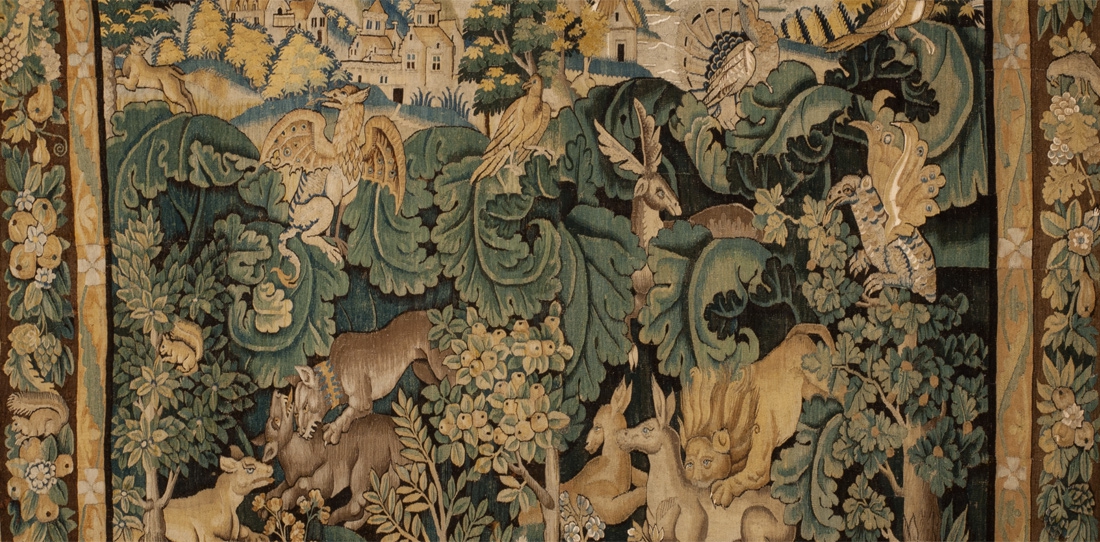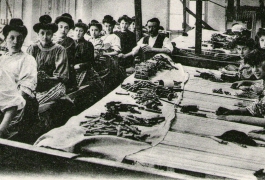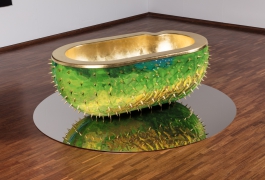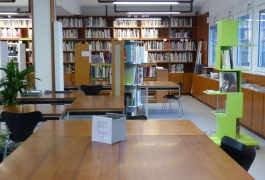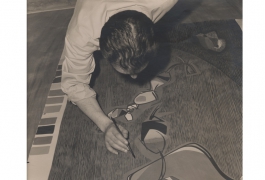Rise and development of a craftsmanship
The development of tapestry production could match the development of several handicraft activities in Massif Central (cutlery, papermaking, armoury, silk fabric production and, later, lace). As the Flemish origins remain uncertain, we can imagine that the previously established local industry of making woollen cloth and blankets could have lead to specialisation in tapestry making.
The "millefleurs"
Around 1530, a new genre of tapestries appeared, first in Flanders, and then in the Aubusson region: foliages “of cabbage leaves”,“of large leaves”, “of upside down leaves” or “of Aristolochia”.
The main focus of these tapestries is the wild nature, with its mysterious and inhospitable character, populated by real or fantasy animals. Civilisation is always depicted in the distance by the presence of dwellings, whilst the centre of the image is overrun by imposing foliage, battlegrounds and the appearance of wild animals.
In the foreground, the foliage generally illustrates more hospitable outskirts, often with the presence of pruned trees, fruit trees and little flowers.
These tapestries almost never feature human characters, they remain illustrations of an impenetrable universe of vegetation and animals, situated on the border of civilisation.
Other artwork of this style can also be found in the region, at the La Trémolière castle in Anglards-de-Salers in Cantal.
Tapestries of flower vases: an unknown production (1620-1635)
The Flemish enthusiasm for flowers is famous: paintings, etchings, embroideries, silks, laces, etc., were produced with this iconographic theme. Rich and sometimes improbable, as the combination of flowers do not bloom in the same season, bouquets are displayed in sumptuous vases, silversmiths' masterpieces.
The Aubusson tapestries followed this short, decorative trend from 1620 to 1635. They were woven on a black or white background.
The greats hangings ("tentures") in the 17th century
A collection of tapestries on the same subject is called a “hanging”. These weavings, often made up of 6-8 parts, can comprise of more than 12 to 14 assorted tapestries. A woollen hanging not only serves as a lavish decoration for a home, but it also helps keep the inside of a room warm and protects it against the cooling properties of the stones.
The set can easily be moved to another location. The scale of the woven surfaces allows a whole story to be told (biblical, mythological or literary stories). Since the 16th century, etchings and paintings have served as models for the tapestries produced in the Aubusson region.

